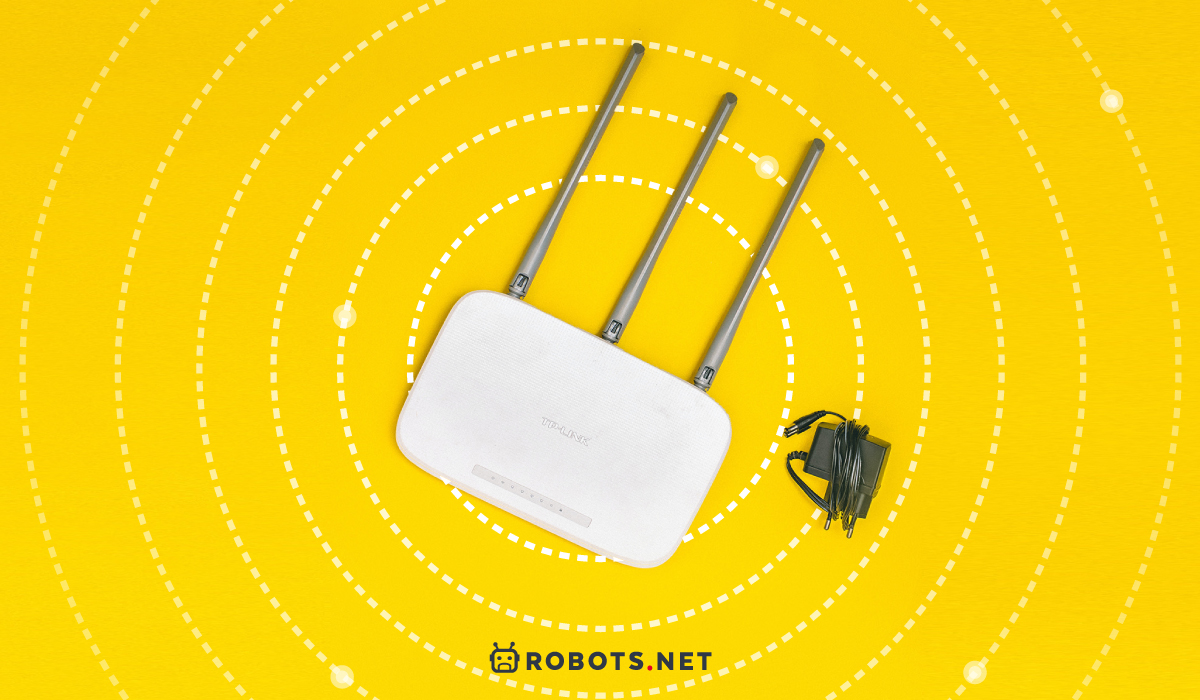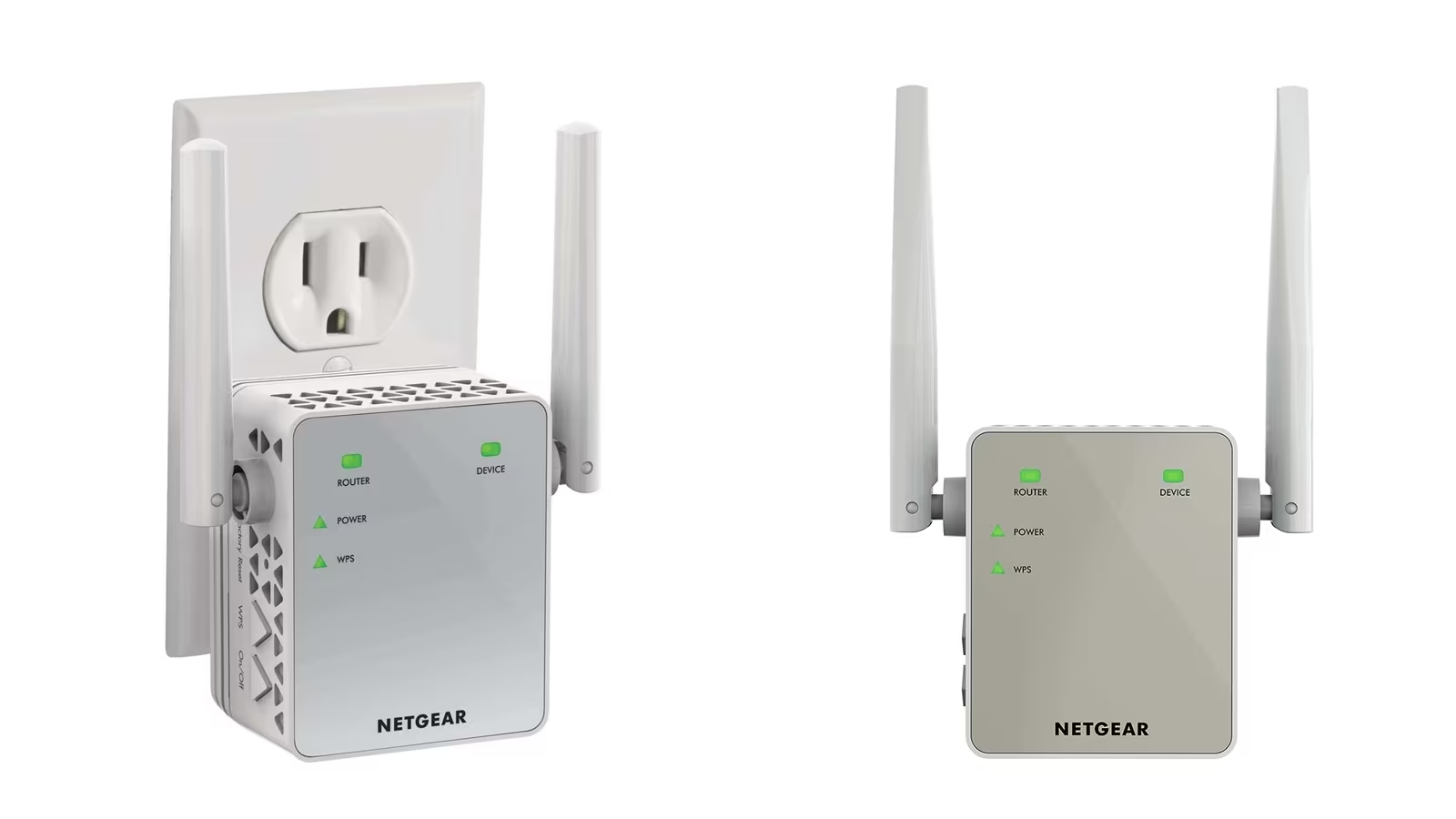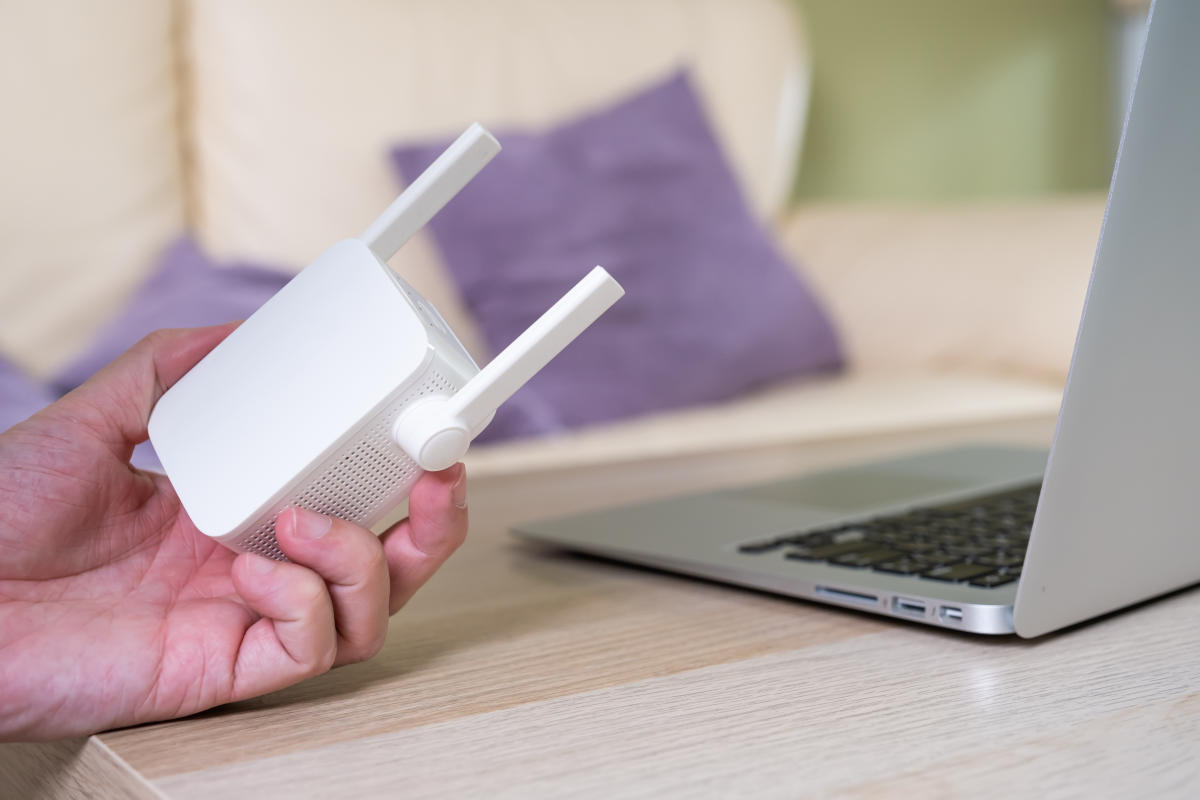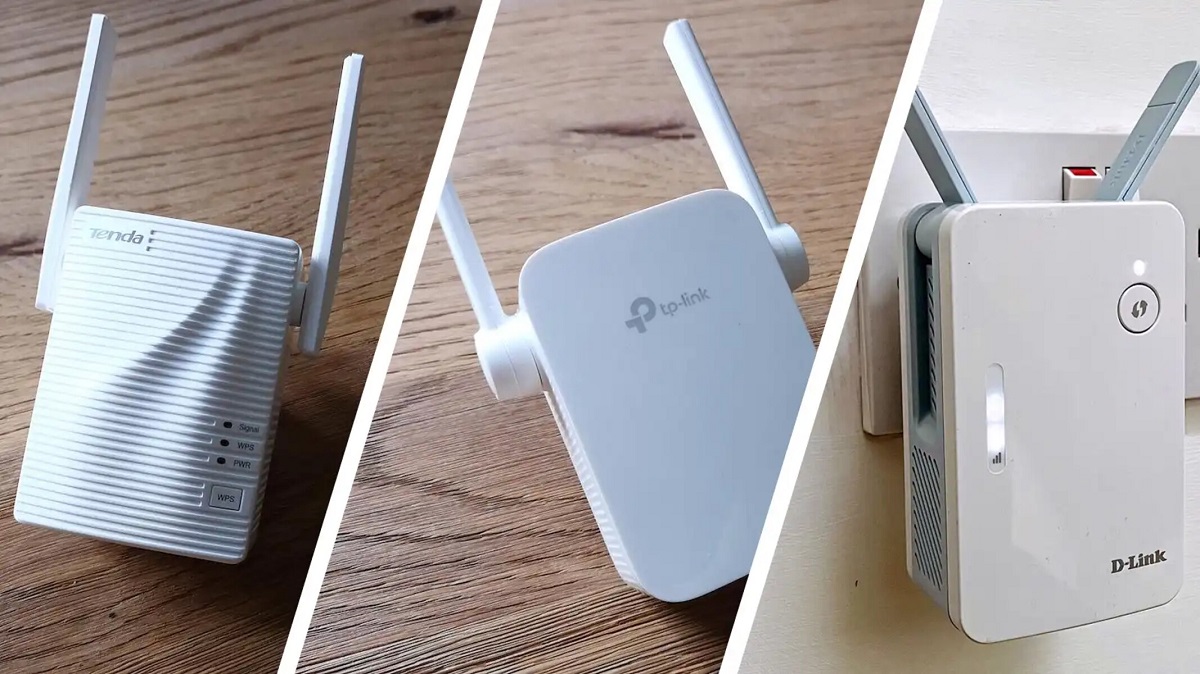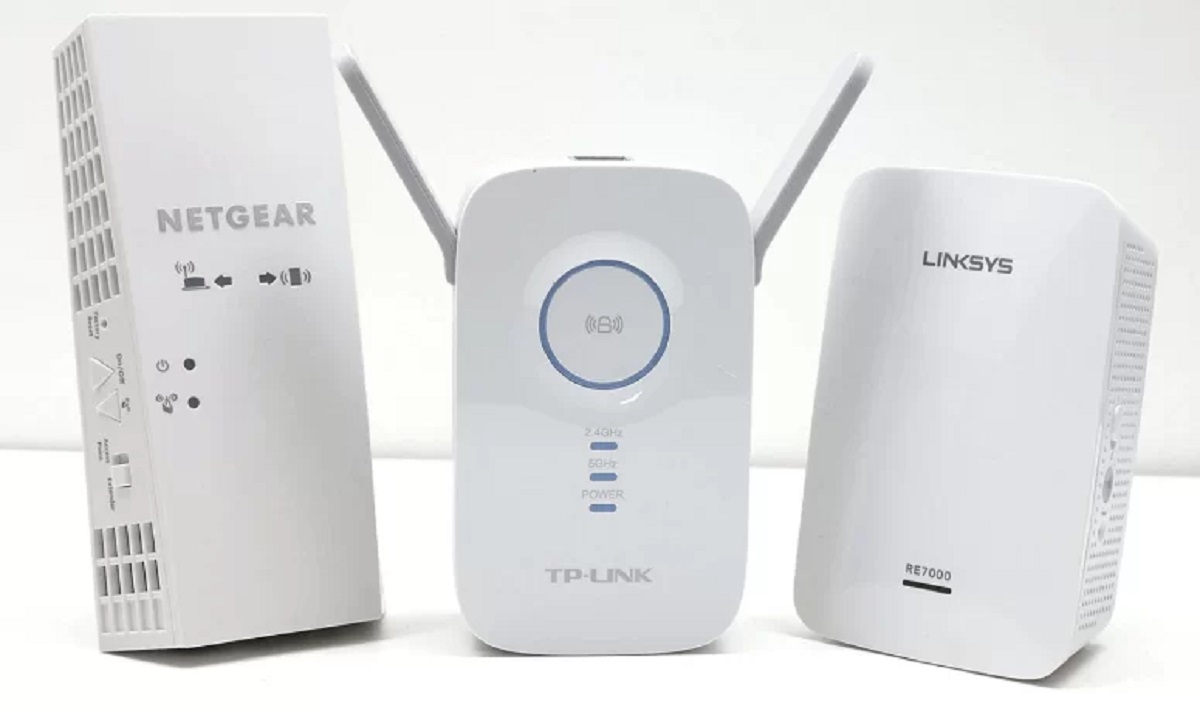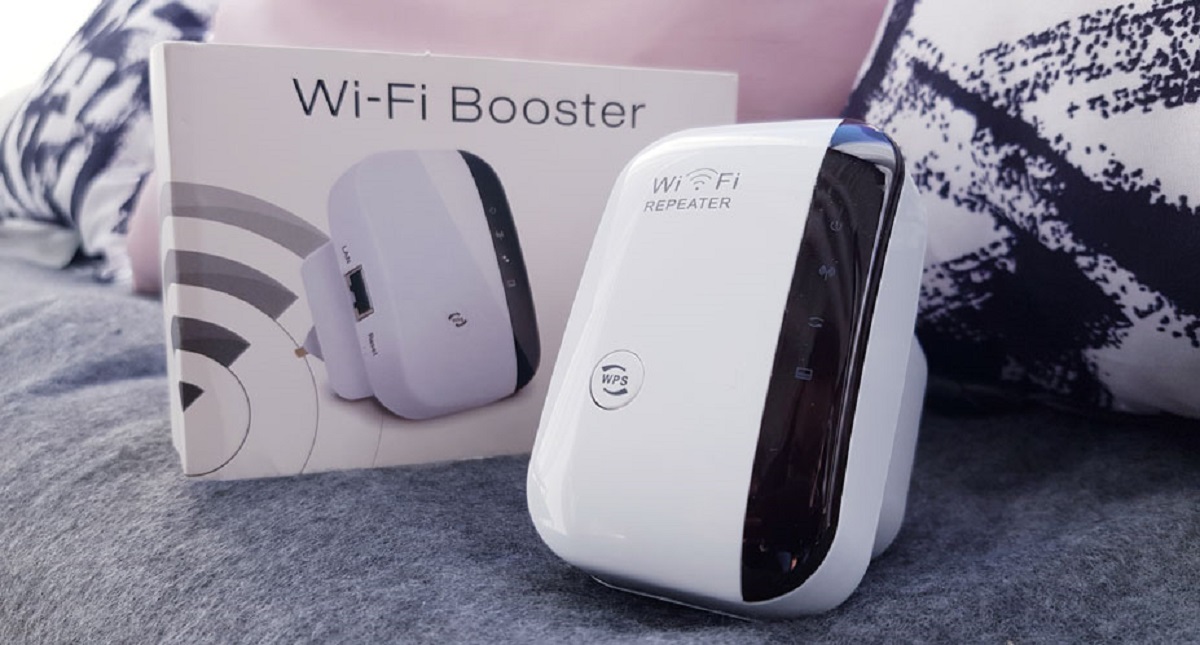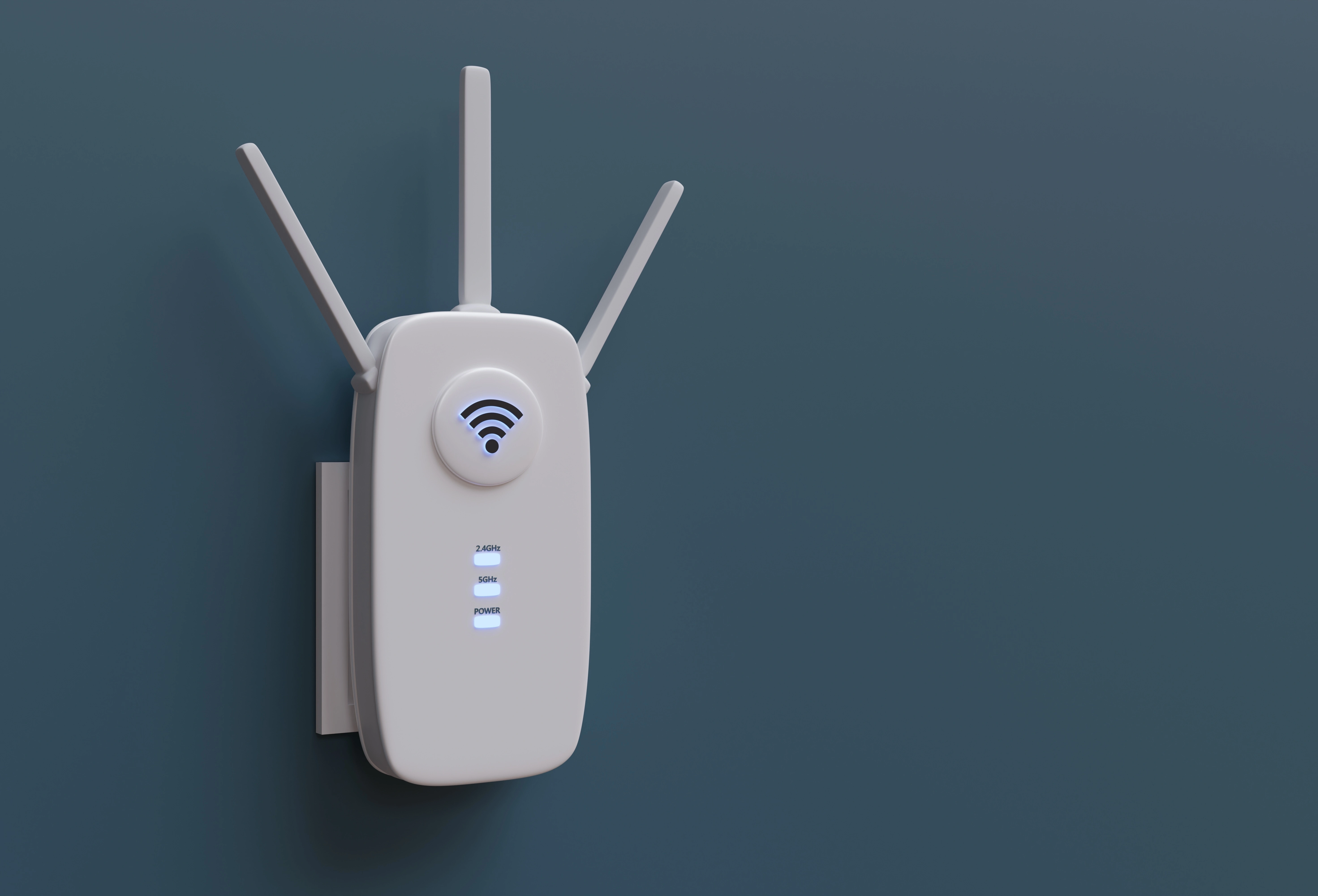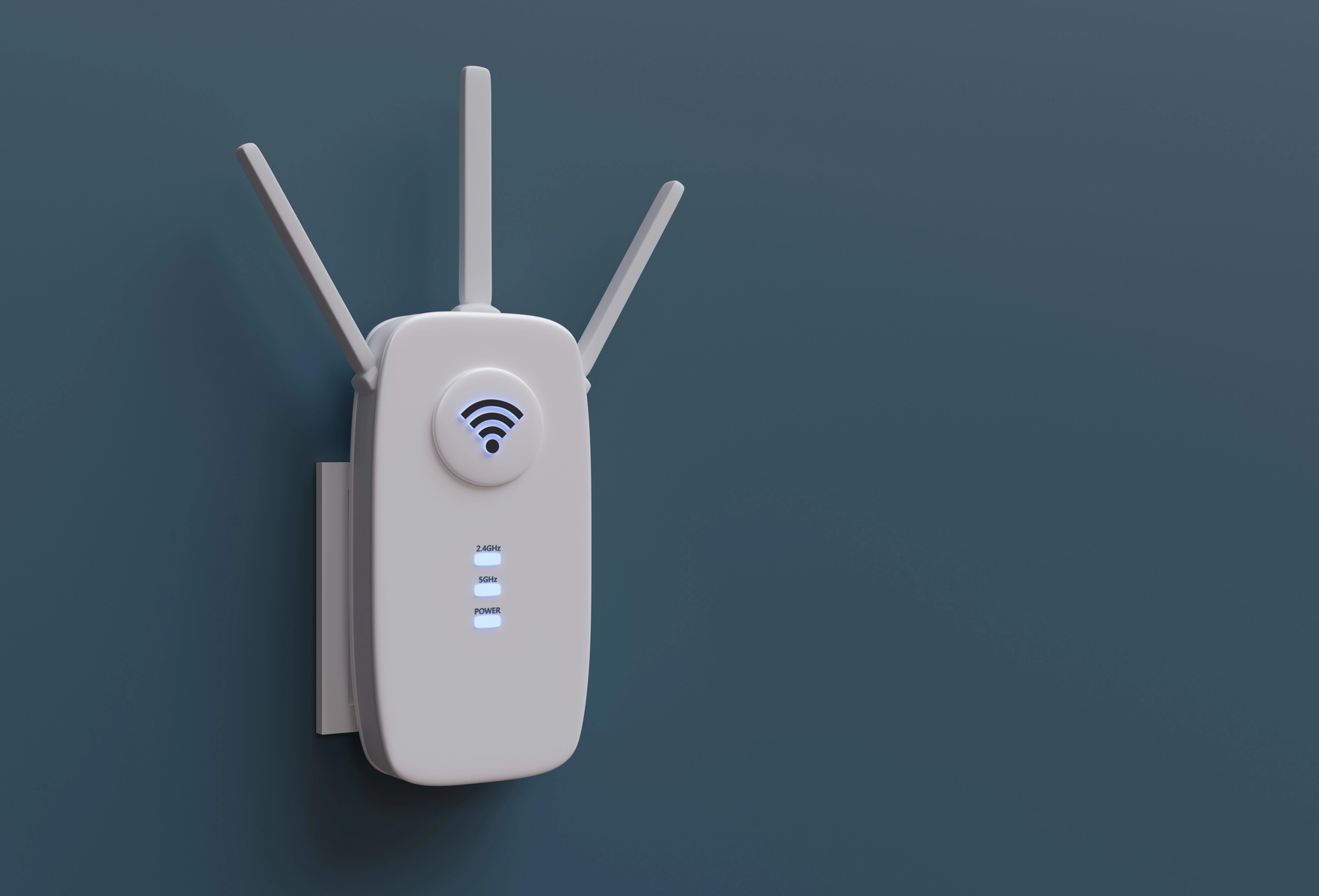These days, WiFi connectivity is almost essential. That’s especially true if you’re working from home instead of going into the office. Unfortunately, not everyone knows how to boost the WiFi signal through walls to get a signal all across the house. That’s why we’re here: to demystify the process and help you make the most out of your WiFi plan. Let’s begin.
For more WiFi articles here is our Nest WiFi vs Google WiFi comparison guide.
15 Hacks On How To Boost WiFi Signal Through Walls
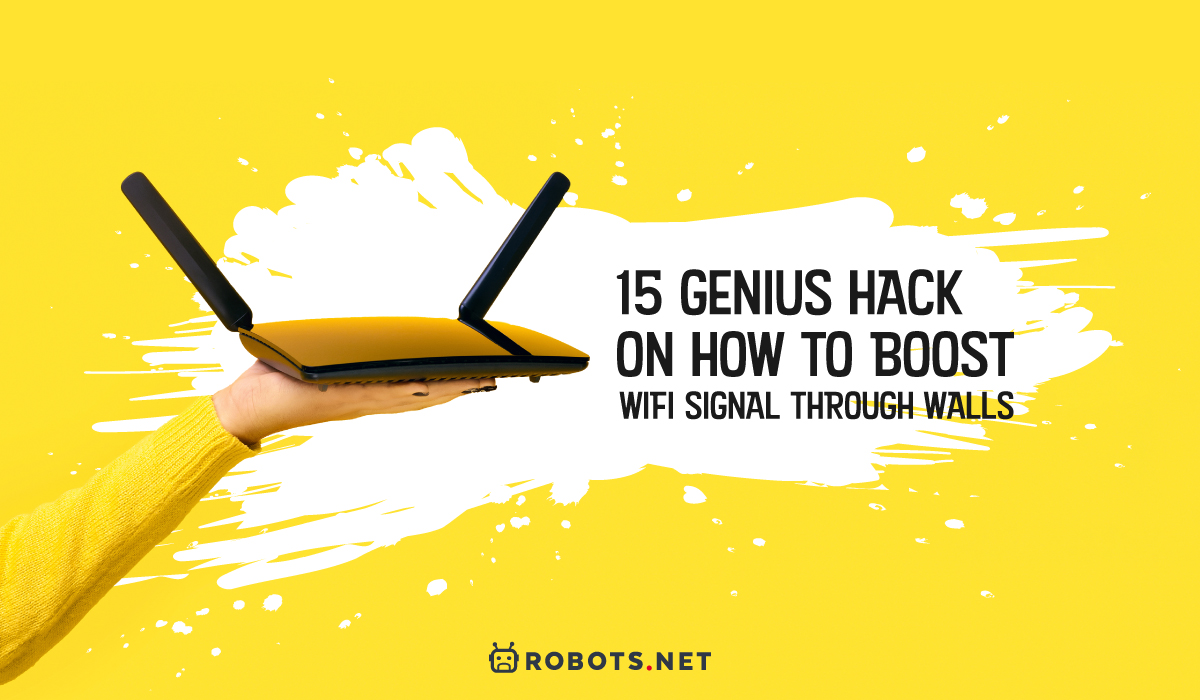

1. Check Your Network Connection
Before you start learning how to boost WiFi signals through walls, it’s best to check your internet connection first. This is because, sometimes, your problem with speed isn’t caused by anything in your setup. At times, your ISP could be fooling you and providing slower speeds than what they’re billing you for.
Hence, it’s important to run a speed test before you proceed with the other methods. If the speed that appears isn’t what’s being billed to you, you can call your ISP and register a complaint.
However, if the speed matches your bill, then the solution might not lie in extending your signal through convoluted methods. You might just be due for a speed upgrade — although it will cost you some money.
2. Change Router Location
Many people ask about how to extend the WiFi range through methods like buying mesh WiFi routers or extenders. However, did you know that simply changing your WiFi router’s placement can already impact its range tremendously?
This works because many obstacles — not just your walls — interfere with your WiFi signal. Hence, making sure nothing is blocking your WiFi router is essential. This includes items like shelves or desks. Those made of metal are especially problematic as they deflect WiFi signals.
Furthermore, appliances and other gadgets that emit frequencies can also interfere with the signal. These include smart kitchen appliances, microwaves, and even baby monitors.
In addition, we recommend placing your WiFi router in a central location instead of your home’s farthest corner. This is because routers emit WiFi signals in a sphere. Hence, putting it in a central spot ensures you’re not wasting any of that precious WiFi signal. It may seem unsightly, but it’s certainly effective.
Lastly, ensure that the router is in a place that’s a bit high. This ensures you’re not wasting any of the range and allows the signal to easily bleed into the second floor. Sure, it’s not a foolproof method for how to boost WiFi signal through walls. Nonetheless, it’s a low-cost way to boost your signal around the house.
3. Use Aluminum Foil
If you’ve asked your friends how to boost WiFi signal through walls, you might have come across the rumor that says aluminum foil does the trick. Is this phenomenon true? If so, how can I boost my WiFi signal with aluminum foil?
The fact of the matter is that: yes, aluminum foil can impact your WiFi signal. This is because it can deflect the signal, blocking it from going in a certain direction. While this may seem counterproductive, aluminum does more than just block the signal. That’s because it also redirects it, concentrating the signal to a specific area.
As a result, you can artificially increase your WiFi’s range, strength, and speed to lessen blind spots. Here’s how to boost the WiFi signal with aluminum foil: just create an aluminum box with one open side. You’ll use this to redirect the signal to the direction you want. Once finished, you can place it at the tip of your antenna to amplify your WiFi’s range.
4. Update Firmware On The Router
Updating your firmware is another low-cost method for how to boost the WiFi signal through walls. Of course, it doesn’t truly boost it the way a mesh WiFi or extender would. However, it does help by strengthening your router’s signal.
This is because sometimes, bugs and errors within routers can hamper your WiFi’s range. As a result, you get weaker signals and slower speeds despite having a high-speed plan. Fortunately, router makers do release firmware updates to get rid of these bugs.
If you’re interested, we’ll teach you how to increase WiFi range from router settings. Firstly, we recommend downloading the new firmware update from the manufacturer’s website. If you own a TP-Link router, you may type “TP-Link firmware install” on Google.
Afterward, you should find the download center from your manufacturer’s site. Look for the router version you have and download the most recent firmware zip file. Once it’s complete, head to your downloads folder and unzip the file.
Then you must log into your router with the username and password. You can navigate to your browser and enter any one of these into the address bar:
- 192.168.2.1
- 192.168.0.1
- 192.168.1.1
- 10.0.1.1 (Apple router)
Enter your credentials (found on your router’s bottom side). Afterward, navigate to the router’s settings and look for the “Firmware Update” area. Click the “Update” button and let it install.
Sometimes, updating the router automatically doesn’t always work. This is where your unzipped firmware file comes in. Just click the “Upload” option in your router’s settings and choose the file you got earlier. Then hit “Open” so that the router installs the latest firmware.
5. Change WiFi Frequency
Sometimes, learning how to boost WiFi signal through walls isn’t required to get the best speeds. That’s because you can also utilize your router’s different frequencies depending on the room you’re in.
Now, you might have never heard of WiFi frequencies before. Why are they important to this discussion? This is because different WiFi frequencies prioritize different things. There are two common frequencies you’ll find on most routers: 2.4GHz or 5GHz. Some routers even have both.
What distinguishes these two is that 5GHz prioritizes speed while 2.4GHz focuses on the range. If you’re near the router, chances are utilizing the 5GHz connection will enhance your speed greatly. However, 5GHz speeds can’t penetrate thick walls as easily as 2.4GHz frequencies. Hence, the former is only good to use if you truly need a fast internet connection.
On the other hand, the 2.4GHz connection is superior if you’re far from the router. Sure, this comes at the expense of speed. Nonetheless, it’s a decent trade-off, especially if you desperately need the connection.
How do you change frequencies? Simple: go to your device’s WiFi settings and let it search for different signals. You should find your WiFi’s name along with the words “2.4G” or “5G” next to it. Connecting to the former will give you a 2.4GHz frequency while the latter will yield a 5GHz frequency.
However, remember that not all WiFi systems support dual frequencies. Only 802.11ax, 802.11ac, and a few 802.11n routers support it. Otherwise, you can’t utilize the ability to connect to dual frequencies even if you want to.
6. Change The Channel
Routers, like old walkie-talkies and radios, connect to various “channels” to provide you with a network connection. However, the problem with many cheap routers is that they connect to these different channels automatically.
Hence, your router could be automatically connecting itself to a channel that’s congested with other routers from other households. This is especially problematic in crowded areas and big cities with lots of homes and businesses.
Of course, if your router is a high-end one, it should be able to pick the least congested channels to connect to. However, if your router is mid-range, it’s best to learn how to boost WiFi signals by changing the channel manually.
To accomplish this, simply log into your router’s admin interface. Afterward, go to the basic wireless category and manually choose a channel. You can manually connect to different ones and run speed tests to see whether your speed has improved.
Alternatively, you can also check which nearby channels are congested by bringing up your PC’s command prompt. Afterward, type “netsh wlan show all” to see a list of networks and channels.
7. Replace Your Antenna
Most WiFi routers come with omnidirectional external antennas to broadcast a signal. However, while omnidirectional antennas are good for distributing the signal evenly, they’re not ideal if your goal is to extend the range to a specific spot.
In this case, we suggest replacing one of your router’s antennas with a directional antenna. This is a decent method for how to extend the WiFi range without an extender if you want to keep the number of external devices to a minimum. It’s also cost-effective, so it’s a fairly accessible method.
On the other hand, if your router doesn’t have an external antenna in the first place, it may be a good idea to buy one. Fortunately, most router manufacturers do sell antennas separately so installing one shouldn’t be a problem.
8. Add Another Antenna
How do I extend my WiFi signal to another building 400 feet away? If your main concern is learning how to boost the WiFi signal outside, adding another antenna may be the solution. We’re not talking about the type of small antenna you connect directly to the router.
Instead, we’re talking about larger antennas, whether directional or omnidirectional, you can place in your yard. They work similarly to small antennas. However, they should be able to extend your signal even outdoors.
What’s more, some of these antennas are even weatherproof because they’re built for extending the range to other establishments.
9. Get An Extender Or Repeater
Can WiFi extenders work through walls? Yes, getting a WiFi extender or repeater is a decent way to learn how to boost the WiFi signal through walls. That’s because these devices are inherently designed to extend your coverage area.
How do these devices help boost your signal? As the name implies, a WiFi extender or repeater works by enlarging your WiFi signal’s coverage area. This makes the unseen, spherical range of the network larger so it can cover more dead spots. It’s a fairly cheap solution, especially because, unlike mesh systems, you don’t have to replace your router.
However, remember that WiFi extenders and repeaters do have their downsides. For example, WiFi extenders aren’t great at handling backhaul traffic, so not many devices can connect to them. Also, the signal you’ll get from the extender will be slower and the ping will be higher.
Regardless, WiFi extenders and repeaters are a decent, cost-effective method for how to boost WiFi signal through walls. They’re not perfect but they certainly get the job done.
10. Purchase A Mesh WiFi System
A mesh WiFi extender or mesh system is much more advanced than WiFi signal boosters like extenders and repeaters. With them, you can connect multiple wireless access points (WAP) and scatter them throughout your home.
These WAP devices essentially act as other routers which you can strategically place all around the house. As a result, you get an extended signal and range to cover all the dead spots.
Now, it might seem like it acts the same way as a WiFi extender. However, remember that WiFi extenders are inefficient because the signal jumps from your router to the extender to your device. As a result, you get much less signal compared to when you’re connected to the router directly.
On the other hand, a mesh system maintains the same signal even though it shares it with other WAP nodes. Hence, what your device receives will be no less weak than what it would have gotten connecting to your router. This is why a mesh system is one of the most effective ways how to improve WiFi signals upstairs.
However, just like any other solution, mesh systems aren’t perfect. That’s because it doesn’t provide optimal, high-speed gaming quality signals unless you connect the nodes via ethernet. While this is possible, it’s not always practical unless you’re willing to manage the wiring throughout the entire household.
11. Use A Powerline Adapter
Using a powerline adapter is another great method for how to boost the WiFi signal in your home. These devices utilize your house’s electrical wires to transmit network signals throughout your area.
How does it work? Firstly, when you purchase a powerline adapter, you’ll get a set of two. You’ll have to plug one into an outlet near your router and the other near your device that requires ethernet.
Afterward, you must connect the router (via ethernet) to one adapter and your device to the other. This allows you to extend your wired connections to rooms that are farther away from the router.
Alternatively, you can also use powerline adapters in tandem with WiFi extenders. Instead of connecting the second adapter to your device directly, you’ll connect it to the extender. Doing so will boost the extender’s strength.
However, remember that powerline adapters will only work if your house has solid electrical wiring. Moreover, these devices are limited to 200 Mbps max, so they can’t provide speeds higher than that.
12. Try A MoCA Adapter
A MoCA adapter is another solid method for how to boost the WiFi signal through walls. That’s because, like powerline adapters, these devices also utilize your house’s wiring. However, it’ll use coaxial wires instead of electrical ones this time around.
MoCA adapters function in similar ways to powerline adapters. You only have to plug them into an outlet to work. However, this time, you need to plug coaxial cables into each MoCA adapter in addition to plugging them into devices.
With that said, what makes MoCA adapters different from powerline adapters? Firstly, they don’t have a speed limit. Hence, they will work and extend your range and strength even if you have high internet plans.
However, remember that MoCA adapters do come at a high price. They come at almost double the price of regular powerline adapters. Moreover, unless your router supports it, you’ll need two of these devices — which doubles the cost.
13. Upgrade Your Router
Mesh systems are quite handy for learning how to boost WiFi signal through walls. However, some people can’t afford to replace their entire setup with new nodes and routers. Hence, it’s sometimes more appropriate to upgrade your router instead.
Upgrading your router should allow you to continually receive reliable WiFi signals on more than one device simultaneously. We recommend getting one that runs at least 802.11ac with MU-MIMO. This is especially important if your household has four to seven devices that require a network connection.
On the other hand, if you have eight devices or more, getting an 802.11ax router would be better. This should enhance the experience because routers like these can support more devices while maintaining higher speeds.
Upgrading your router is much more affordable compared to purchasing an entire mesh system. Moreover, it doesn’t require as much setup and strategic planning as mesh systems do.
14. Deal With WiFi Intruders
Sometimes, learning how to boost WiFi signal through walls using mesh systems and extenders isn’t the best method. This is because there are times when the problem with your internet speeds could have a different source. That is, there could be an intruder interfering with your network.
This usually happens when an uninvited guest user piggybacks off your network. It commonly occurs when your WiFi password is weak or has been leaked somehow to other users. Moreover, it’s especially problematic if your neighbors tend to abuse your network by downloading 4K videos using your WiFi.
Fortunately, tools like the Wireless Network Watcher can help you catch unwanted intruders. Alternatively, some routers have admin interfaces that can analyze your traffic. With them, you can see which devices are using too much data.
Thankfully, you can easily kick out intruders by changing the WiFi password entirely. This will kick off all the devices currently connected to your WiFi — even your own. Sure, this means you’ll have to reconnect each device to the WiFi again. Nonetheless, it’s a foolproof way to kick off intruders.
15. Control Quality
Modern routers have a Quality of Service (QoS) tool to limit an app’s use of your WiFi’s bandwidth. You can use these tools to manage what your router prioritizes. For example, you can choose to give more bandwidth to video calls over downloads or vice versa.
In addition, these tools can even let you prioritize different apps at different times. For instance, you can prioritize multimedia apps and games at night while giving way to Google Sheets during the day.
Sure, it isn’t exactly a method for how to boost the WiFi signal through walls. Nonetheless, it should help you manage your speeds and make things more efficient. You can find most QoS tools in your network administrator’s interface. Just look for the advanced settings and search around to find the QoS tool.
Products You Can Buy To Help In Boosting Your WiFi Signal Through Walls
How can I make my WiFi signal stronger in every room? If you want to make the most out of your internet plan, then we recommend setting up your household in a way that extends your signal everywhere. With that said, here are a couple of products you might want to buy to help you with just that:
Benefits Of Boosting Your WiFi Signal
Learning how to boost WiFi signal through walls comes with many benefits. Firstly, covering your entire household with WiFi means you don’t have to run around everywhere just to access the internet. You’ll never miss a message whether you’re in your bedroom, kitchen, or even your bathroom.
In addition, boosting internet signals lets you place electronic devices on all parts of your house. This will allow you to put smart TVs even in your kitchen or garage if you so desire.
Moreover, it helps tremendously if you’ve always wanted to set up a smart home with smart lights, doorbells, and alarms. That’s because most of these devices require WiFi connectivity to work properly.
Finally, increasing your WiFi’s signal strength and distributing it across your household allows for more flexibility. You can work, watch TV, or even work out using WiFi-dependent apps anywhere in the house.
Final Word
Learning how to boost WiFi signal through walls is pretty easy if you know which tools to get. Just remember that some of these methods require more setup than others. Moreover, the most effective methods, like setting up a mesh system or using MoCA adapters, will cost money. If learning how to boost WiFi signal through walls is truly your priority, be prepared to spend a little.







